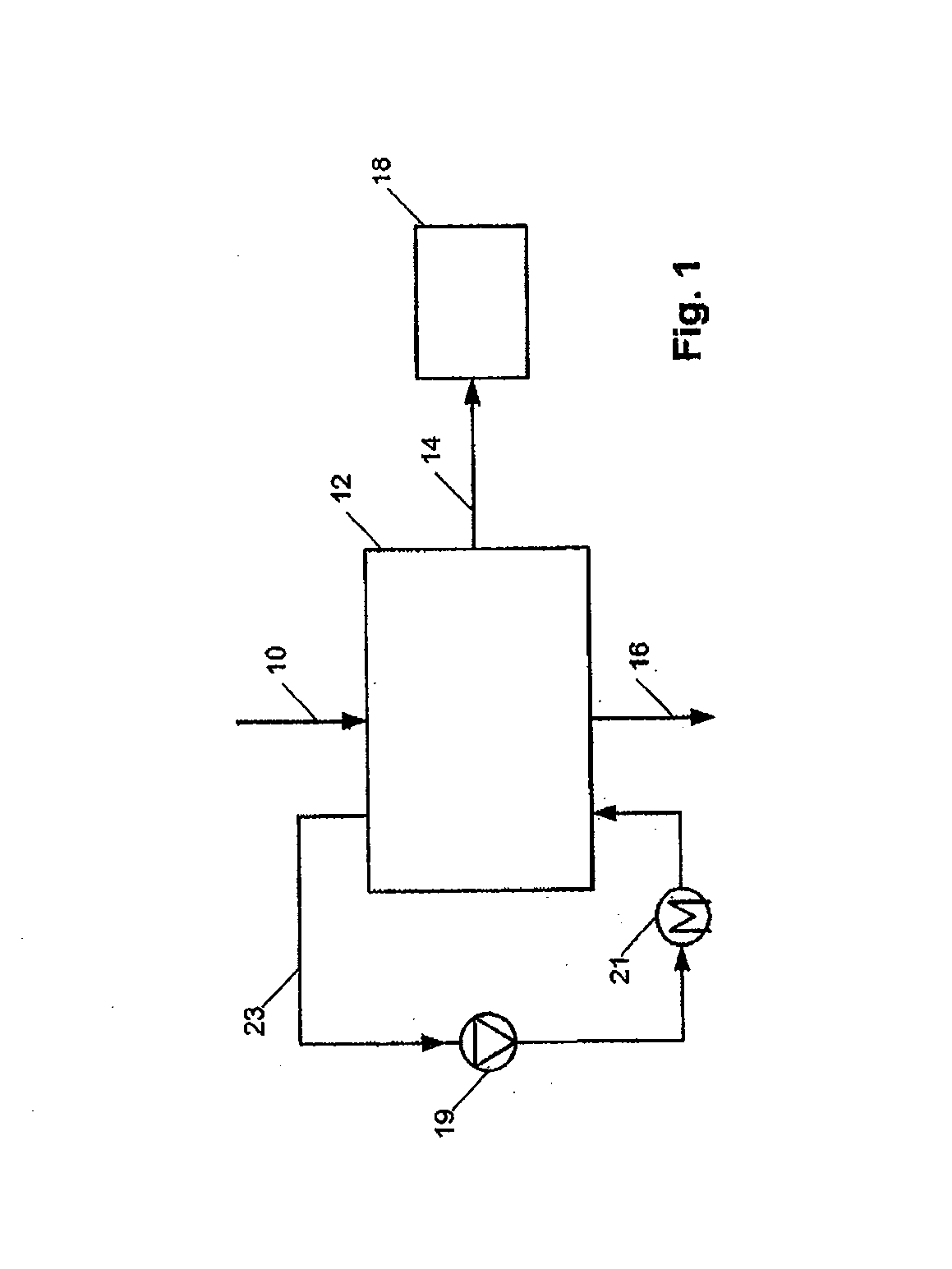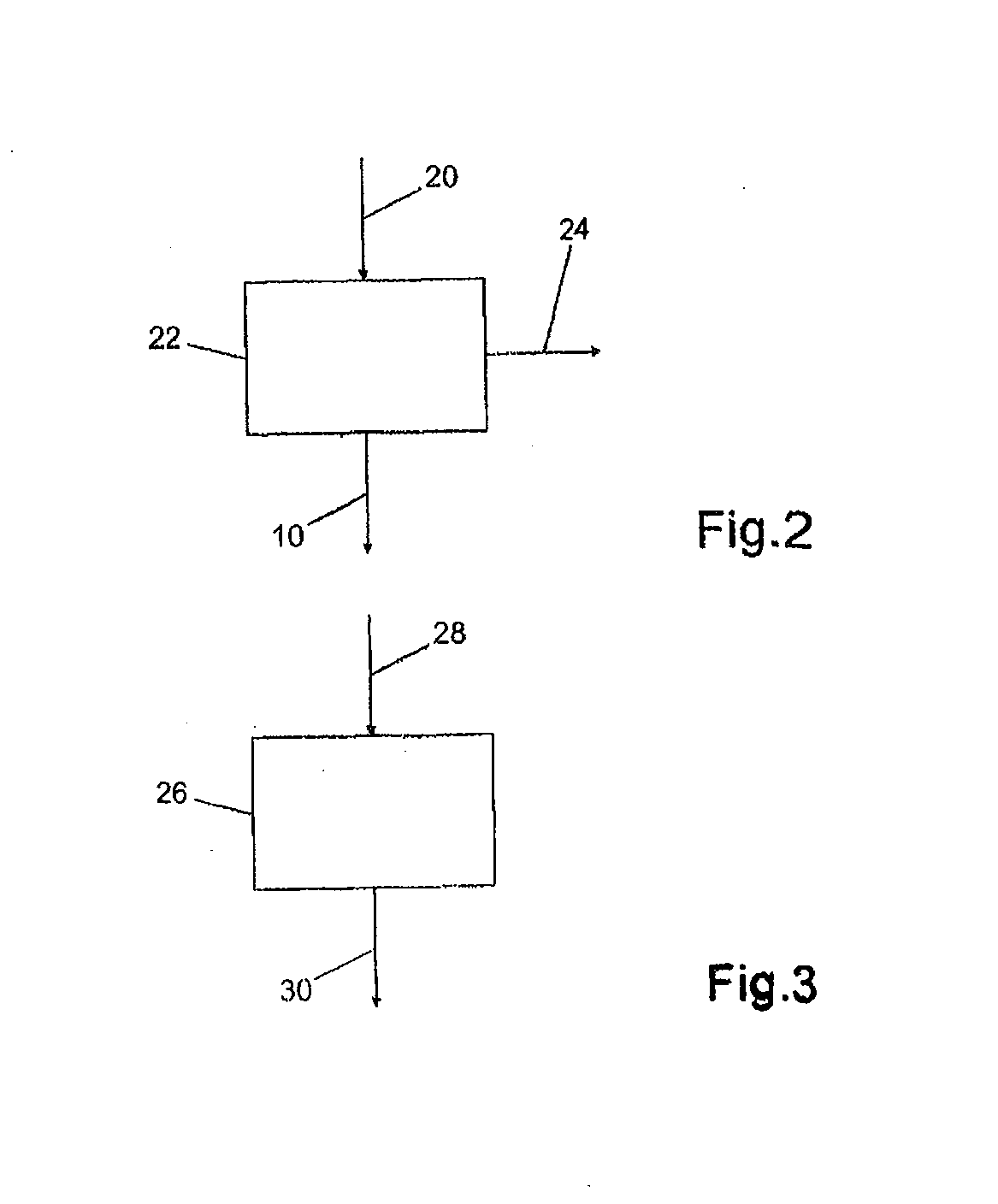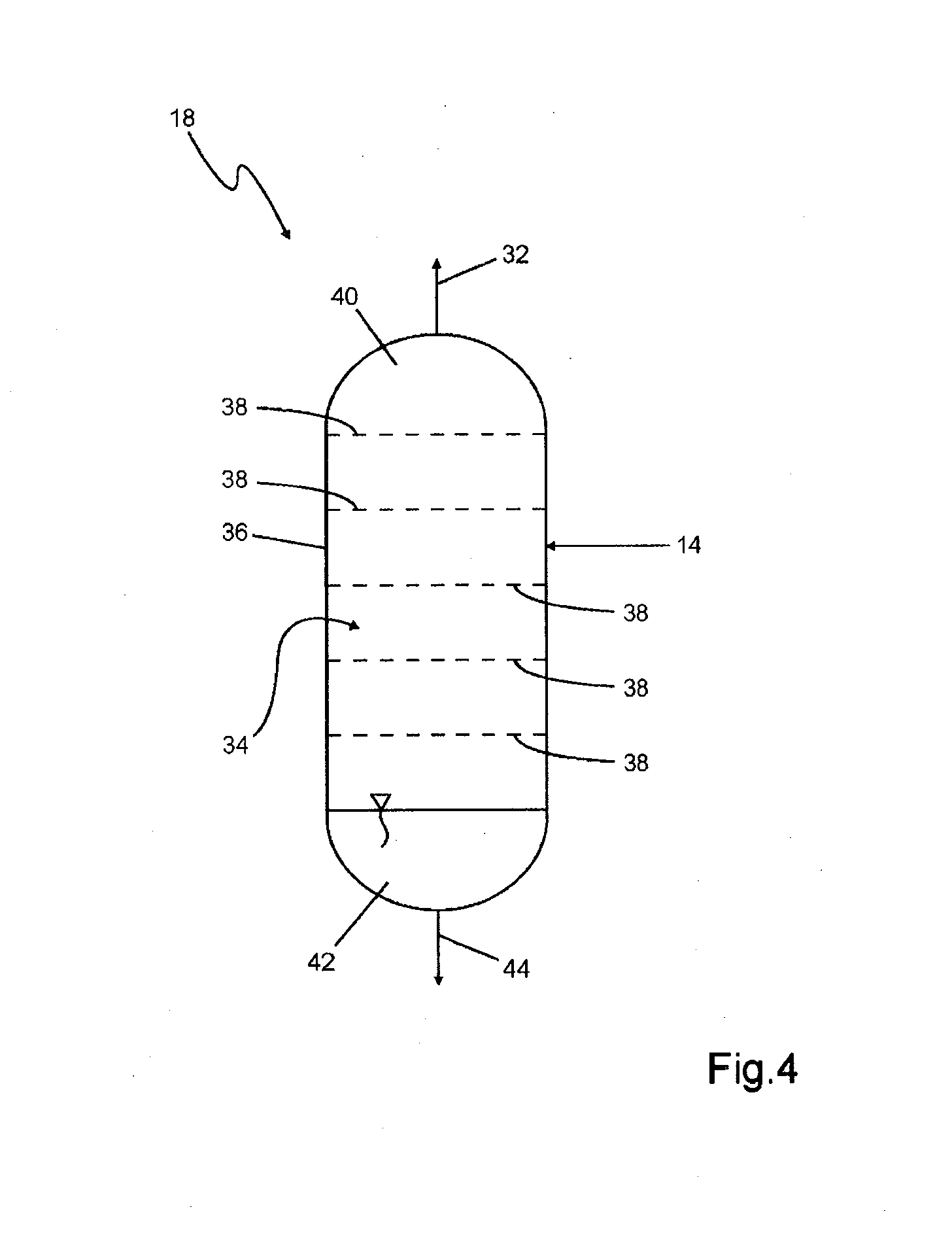Method for recovering volatile components from a solid
a volatile component and solid technology, applied in the field of solid recovery methods, can solve the problems of ammonia loss by evaporation, ammonia is an air pollutant, and is a health hazard,
- Summary
- Abstract
- Description
- Claims
- Application Information
AI Technical Summary
Benefits of technology
Problems solved by technology
Method used
Image
Examples
Embodiment Construction
[0027]FIG. 1 shows the combination of drying and subsequent separation of the volatile components. Solid materials 10 are supplied to a drying process with superheated water steam 10. The material to be dried is exposed to an atmosphere of water steam with a temperature above the boiling temperature (superheated water steam), is heated and releases its moisture in the form of water vapor into the atmosphere of superheated water steam which by means of ventilators 19 is circulated in a closed circuit 23.
[0028]The superheated water steam, temperature of more than 120 degrees Celsius at atmospheric pressure, takes up the moisture and cools down in doing so as a result of release of evaporation heat. This heat is returned to the water steam by a heating device 21 so that a nominal temperature is maintained and a further water absorption is possible. Together with the moisture also volatile components of the solid materials pass into the gas phase. The dried solid material 16 remains beh...
PUM
| Property | Measurement | Unit |
|---|---|---|
| temperatures | aaaaa | aaaaa |
| temperature | aaaaa | aaaaa |
| volatile | aaaaa | aaaaa |
Abstract
Description
Claims
Application Information
 Login to View More
Login to View More - R&D
- Intellectual Property
- Life Sciences
- Materials
- Tech Scout
- Unparalleled Data Quality
- Higher Quality Content
- 60% Fewer Hallucinations
Browse by: Latest US Patents, China's latest patents, Technical Efficacy Thesaurus, Application Domain, Technology Topic, Popular Technical Reports.
© 2025 PatSnap. All rights reserved.Legal|Privacy policy|Modern Slavery Act Transparency Statement|Sitemap|About US| Contact US: help@patsnap.com



